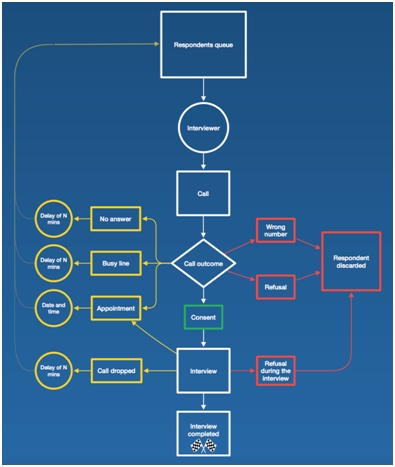CATI is one of the most popular methods in Market Research for data collection. It stands for ‘Computer Assisted Telephone Interviewing’.
Meaning: CATI is a method of conducting research on the basis of an online questionnaire set up on a computer screen, which the interviewer asks to respondents and the responses given are filled-in in the questionnaire.
In market research, CATI is basically a telephonic interview based on an online questionnaire – be it B2B or consumer. The data or responses of the participants are input directly on to a system, which can be analysed later.
ADVANTAGES OF CATI
- Accuracy - The primary advantage of CATI research is that theirisaccuracy in the data collection.
- Costing and Error - CATI research data is automatically stored in the system. This way it saves time in transferring data from paper to digital copies. This helps to reduce cost and errors. CATI research removes the potential for human error.
- Availability - For conducting global research, CATI is very useful as participants can be reached through phone anywhere in the world.
- Quicker - The interviewing process is much quicker because data is entered as it is obtained.The responses of each call can be viewed in real time. This is of great help in terms of project management.
DISADVANTAGES OF CATI
- You often have to avoid discussing certain sensitive subjects over the phone.
- Getting a questionnaire set up and running, fault free, on a CATI system is time taking. But once the set-up is created, and then the process becomes quick.
- Coping with open-ended responses, capturing the responses require interviewers to have fast and accurate typing skills.
- If a respondent makes changes to question answered earlier through the interview, it is more difficult to return and make changes than is the case with paper questionnaires.
- Reaching some target audiences using telephone interviewing is becoming more difficult.


